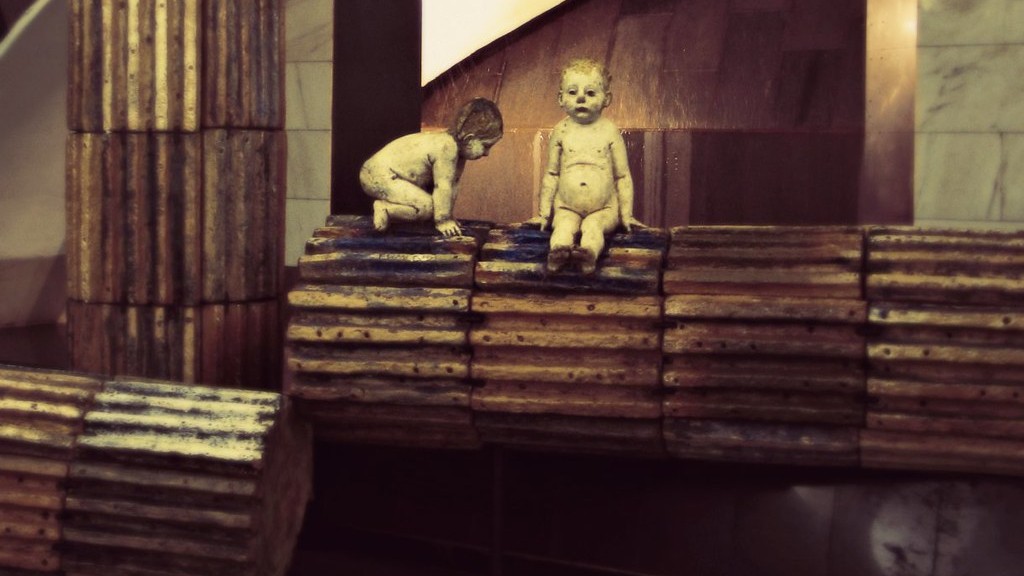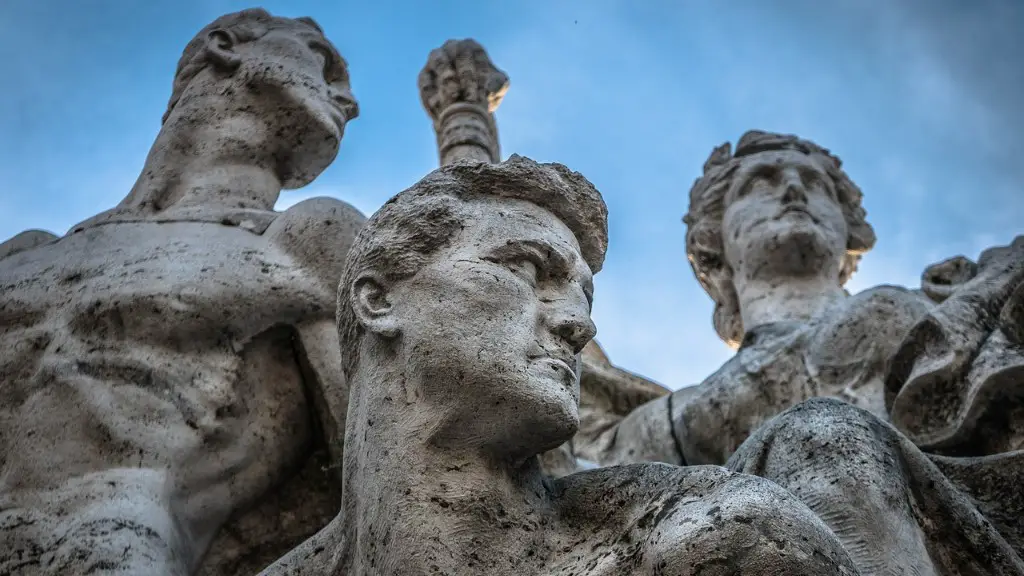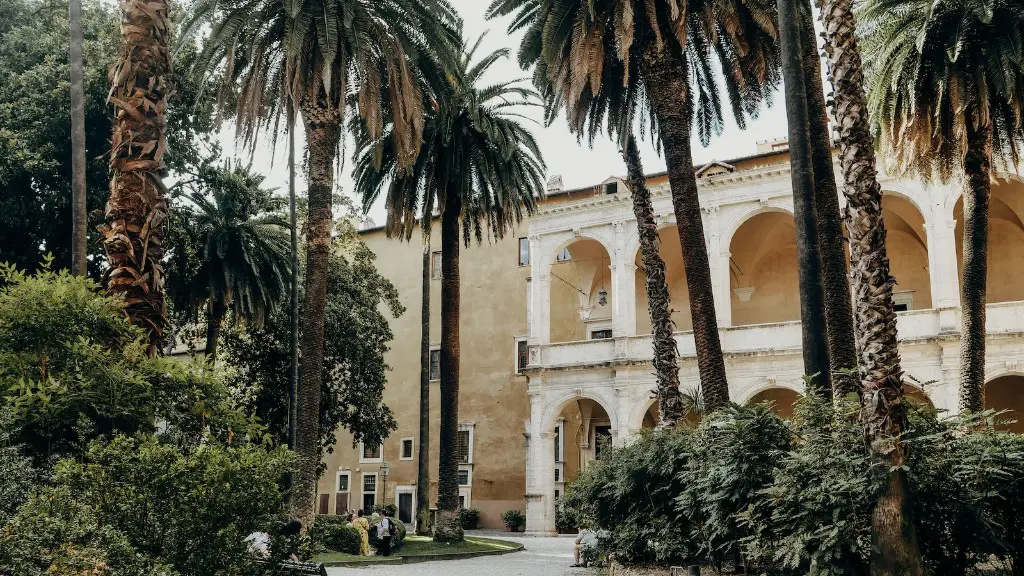Area
Ancient Rome was one of the largest cities of its time, reaching a population of approximately one million people. At its height, it was estimated to have covered an area of 753 km2. By comparison, the city of London, England, is estimated to be around 1700 km2 today – nearly twice the size of Ancient Rome.
The city was centred around the Seven Hills of Rome and surrounded by the Tiber river and its swampy delta. Numerous urban areas grew out from the centre of the city, including the Esquiline, Quirinal, Aventine, Caelian and Capitoline hills.
Experts believe that the city was divided into 14 regions, named after their gods, such as Jupiter and Mars. Each one had its own basilica and temples, as well as social, political and commercial activities. For the most part, the city’s layout was simple and geometric, with streets running in straight lines.
Population
At the peak of its power, Ancient Rome was estimated to have had between 800,000 and 1 million inhabitants. However, there is evidence to suggest that the population could have been as high as 2 million. These figures demonstrate the impressive growth of the city during this time, which ultimately led to its decline due to overcrowding, a lack of resources and inadequate sanitation.
The population was split into three classes: patricians, plebeians and slaves. Patricians were the upper class and landed gentry, while the plebeians were the lower-class citizens who worked as labourers and artisans. Slaves were a common sight in the city and made up a significant portion of the population.
Buildings
Ancient Rome was a vast and impressive city. There were numerous iconic sites, including the Colosseum, the Baths of Caracalla, the Pantheon, the Forum and the Circus Maximus.
The Colosseum was the largest amphitheatre in the world, capable of seating between 50,000 and 80,000 spectators. It was used for gladiatorial fights and animal hunts, as well as other forms of public entertainment.
The Baths of Caracalla were the most famous public baths in the city, capable of accommodating up to 1,600 people at once. Sprawling over 22 acres, the Baths of Caracalla provided public access to water, exercise, socialising and relaxation.
The Pantheon was one of the most iconic monuments of Ancient Rome, featuring a vast dome made of concrete and stone. Its design and construction were remarkable feats of engineering, and it was the largest dome in the world until the 19th century.
The Forum was the centre of political and public life in Ancient Rome. In its heyday, it was filled with statues, temples, courthouses and other public institutions.
The Circus Maximus was the city’s central stadium, located near the Forum. It was an impressive structure, capable of seating between 150,000 and 250,000 people. It was used for chariot races, as well as other athletic and public events.
Culture
Ancient Rome was renowned for its vibrant culture and art scene. Rome was home to some of the greatest artists of its age, including Virgil, Horace and Cicero. Musicians, poets and authors such as Ovid and Juvenal were invited to the city to perform in public.
Theatre was a popular form of entertainment. There were numerous open-air amphitheatres across the city, which were used to perform comedies and tragedies.
Sports were also an important part of Ancient Rome’s culture. Popular sports included chariot racing, boxing, wrestling and gladiator fights.
Infrastructure
Ancient Rome had a highly advanced infrastructure for its time, with public monuments and buildings of all sizes. Templum Pacis, the Temple of Peace, was one of the most impressive sites. It was built in 75BC and was renowned as one of the city’s greatest architectural works.
The city was also home to numerous aqueducts, which were used to bring water from outside the city into its centre. This enabled the city to service large populations of people and to build complex public monuments.
The city had a vast network of paved roads which enabled goods and people to travel freely across the city. The Via Appia, for example, was the most famous and most important of these roads. It was used to transport people and goods from Rome to the Mediterranean.
Government
The Roman Republic was a form of government that lasted from 509BC until 27BC, when it was overthrown by Julius Caesar. This form of government was based on the principles of democracy, fairness and equality.
The city was led by two consuls, elected by the citizens of Rome. Each consul was responsible for specific areas of government, such as foreign affairs, defence and taxation.
The Roman Senate was responsible for making laws and public policy. It was made up of wealthy landowners, who were appointed to the Senate by the consuls.
Economy
The economy of Ancient Rome was largely based on agriculture and trade. The city was home to a large number of merchants and tradespeople, who traded goods from all across the empire.
Clothing, jewellery and pottery were some of the most popular items traded. Coins, made of bronze, silver and gold, were used as currency. Trade routes between the city and its colonies enabled it to access the resources it needed to flourish.
Military Victories
Ancient Rome had a powerful army, which enabled it to expand its territory and establish a vast empire. It conquered and occupied vast swathes of land, from Britain to the Middle East.
Notable military victories included the Roman victory over the Carthaginian Empire, the Battle of Actium and the Battle of the Teutoburg Forest. These victories ensured the supremacy of Ancient Rome and established it as the dominant power in the region.
Decline
By the 3rd century AD, the city was beginning to decline. This was due to overpopulation, a lack of resources, inadequate sanitation and a decline in public order.
In 476AD, the city was sacked by the Visigoths. This marked the end of the Roman Empire and the start of the Middle Ages.
Legacy of Rome
Ancient Rome’s legacy can still be seen in many parts of the world today. Its legal systems, engineering achievements and military tactics have influenced governments and armies worldwide. Its art and culture have also been adopted and adapted by many cultures.
The language of Latin, once the language of the Roman Empire, is the basis of many modern languages, such as Spanish, French, Italian and Portuguese. Even today, the legacy of Ancient Rome is evident in the modern world.


